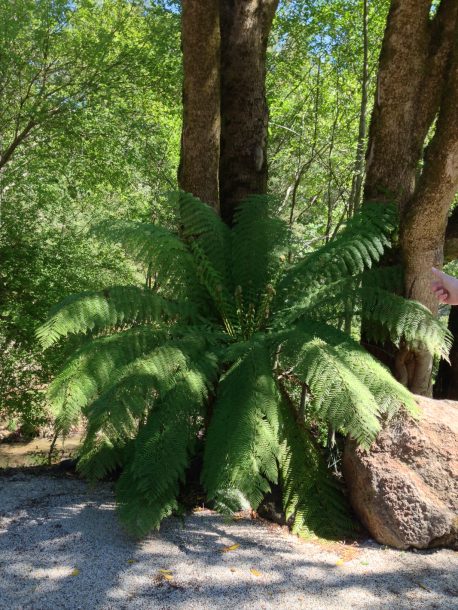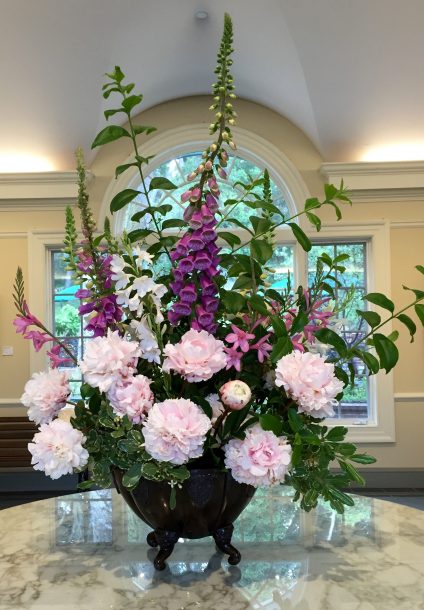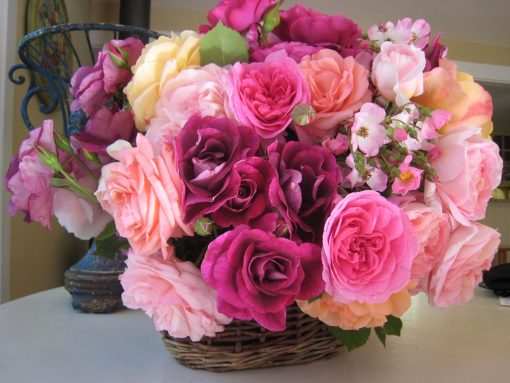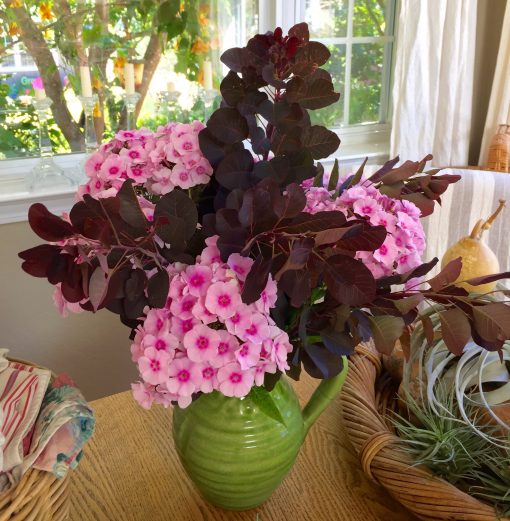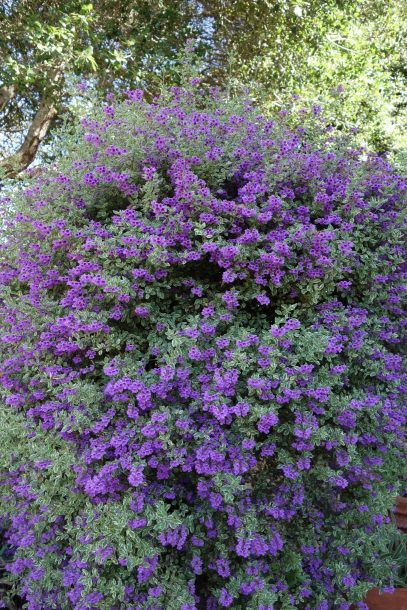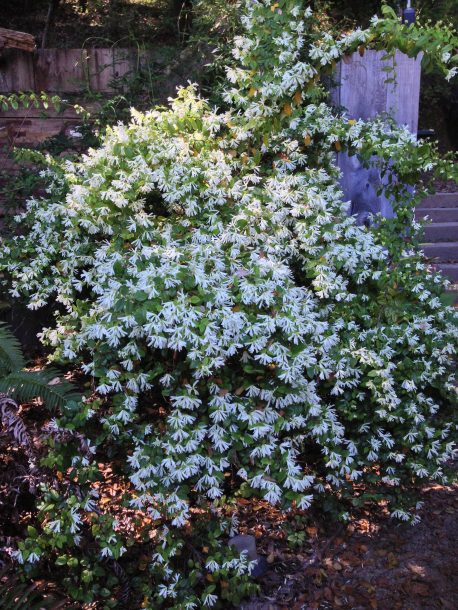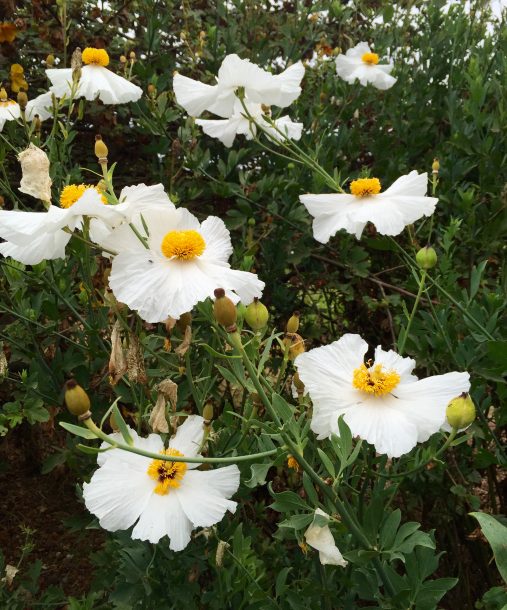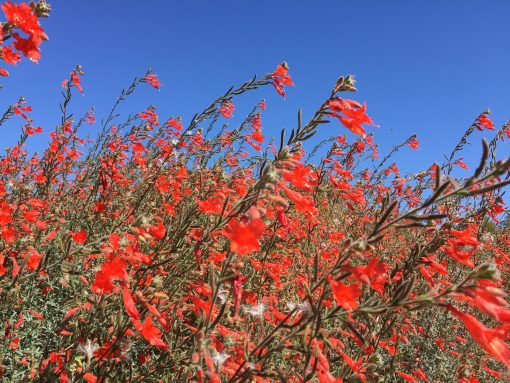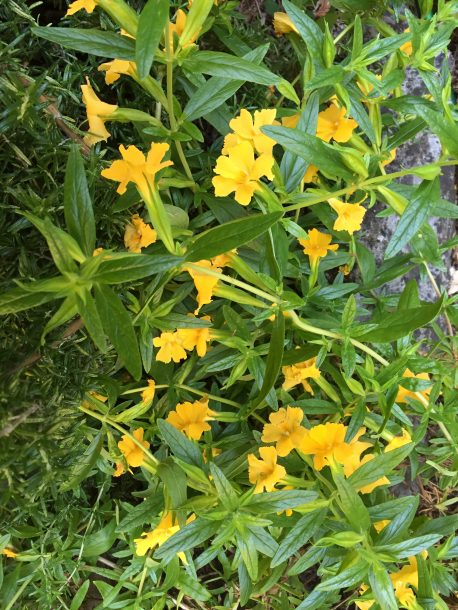
When you look at the list of plants that are toxic in one way or another to humans or pets, it’s a wonder any of us has survived. Maybe it goes under the same category as drinking out of a garden hose when you were young but poisonous plants are a more serious threat. Take a look at your garden and evaluate the risks of these common plants if you have pets or small children.
Not that long ago I was suggesting vines for a design I was working on. The client had a dog that nibbled plants so I wanted to make sure none were toxic. Of the common vines I suggested that do well in our area Bower Vine, Royal Trumpet Vine, Goldflame Honeysuckle and Lavender Trumpet Vine were eliminated from our consideration.
Many of us are including native plants in our landscapes to attract wildlife and save water and resources. Here are some common native plants that you should be aware of if you have small children. This list comes from
Borstein, Foss and O’Brian- California Native plants for the Garden.
Coffeeberry- leaves, berries and bark
California buckeye- all parts (poisonous to bees also)
Western azalea- all parts
Elderberry- all parts except ripe berries and fruit
Solanum-all parts
Snowberry-berries
California buttercup- juice of the plant
Berberis- roots and leaves
Prunus ( cherry )- seeds
California poppy- all parts
Lupine (annual)- seeds, fresh leaves and stems.
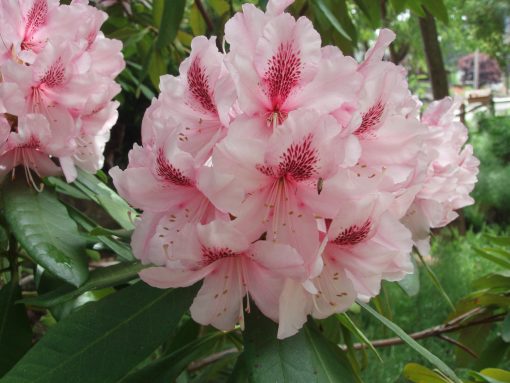
Rhododendrons are just one or our beautiful plants that are poisonous. Children are more susceptible to the effects of plant toxins and should be taught not to eat seeds, berries or leaves from any plant. Do not assume a plant is nontoxic because birds or wildlife can consume it without harmful effects. Be prepared for an emergency by keeping syrup of ipecac on hand and the number of the Poison Control Center. ( 1-800-222-1222 )
Small pets can also be at risk if they ingest parts of poisonous plants out in the yard. Know what plants you have and keep a list. Oleander and foxglove are notorious deadly plants. Here are just some others you might not know.
Hydrangea leaves, flowers and branches contain cyanide. Lantana foliage and especially unripe berries also contain dangerous toxins while delphinium leaves and seeds contain toxic alkaloids which decrease as the plant ages. Sweet peas, lobelia, impatiens, carnations, calla lily, mums and bleeding hearts also have plant parts with come degree of negative effect if ingested.
Surprisingly, even some vegetables contain natural toxins. Diseased celery and green potatoes as well as potato leaves and sprouts produce a very strong toxin. Raw, green, young asparagus shoots can cause dermatitis and the red berries that form on their feathery branches are poisonous. Large quantities of tomato leaves and stems contain alkaloid poisons. Livestock have died from eating the foliage. I guess the deer that browse your tomato vines aren’t ingesting enough to cause them harm as they seem to know just when you have another set of buds for them to nibble.
Trees are not the most common cause of accidental poisonings around the home but a few species may present a hazard.
The black seed inside apples contain cyanide although you have to eat large quantities for them to be deadly. Peach kernals, bark and twigs contain cyanide also as do apricot, cherry and plum pits.
You don’t have to eliminate plants around the home that have natural toxins. Humans have lived for centuries around gardens and orchards. Just be prepared by knowing what plants grow on your property.


